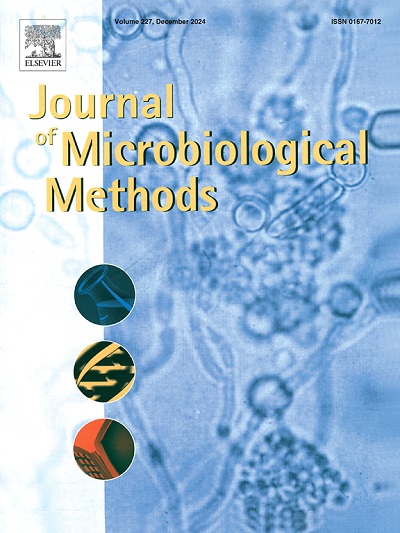Nanotechnology-based electrochemical approach for effective root canal irrigation
IF 1.9
4区 生物学
Q4 BIOCHEMICAL RESEARCH METHODS
引用次数: 0
Abstract
Root canal treatment (RCT) is an endodontic procedure to preserve an infected/inflamed tooth and retain its function. Root canal irrigation is the most crucial step in RCT for cleaning the root canal space. Achieving total disinfection in root canal space is still a significant challenge in dentistry. We developed a novel irrigation approach combining electrochemistry and nanotechnology to eliminate root canal bacteria effectively. Cytotoxicity of the optimized irrigation technique was evaluated using Enterococcus faecalis, and cytocompatibility was evaluated with three different human cell lines (MG63, gingival fibroblast and osteoblasts differentiated from stem cells). A potential of -5 V was applied using an electrochemical set-up to these cells with two different solutions, 0.9 % saline (control) and 5 μg/mL ZnO NPs in 0.9 % saline over various periods (60, 120, and 180 s). E. faecalis biofilms were treated in vitro and viable colony-forming units (CFU) were determined. The morphology of pre- and post-treated cells was examined using SEM and TEM. Morphological changes such as cell membrane rupture or cell lysis were observed in SEM and TEM images of all treatment groups. The optimal ZnO NPs concentration was determined to be 5 μg/mL based on - viability assays of test human cell lines. More than 90 % cell viability was noted with 60s treatment time in all cell lines. Significantly reduced bacterial viability was observed in treatment groups when compared to the non-electrochemically treated groups, indicating effective bacterial eradication.

基于纳米技术的有效根管冲洗电化学方法。
根管治疗(RCT)是一种保护感染/发炎牙齿并保持其功能的根管治疗方法。根管灌洗是RCT中清洁根管空间最关键的步骤。实现根管空间的完全消毒仍然是牙科的重大挑战。我们开发了一种结合电化学和纳米技术的新型灌溉方法,可以有效地消除根管细菌。采用粪肠球菌对优化后的灌洗技术进行细胞毒性评价,并用3种不同的人细胞系(MG63、牙龈成纤维细胞和干细胞分化成骨细胞)对优化后的灌洗技术进行细胞相容性评价。在不同的时间段(60、120和180 s),使用电化学装置对这些细胞施加-5 V的电位,分别用两种不同的溶液,0.9 %生理盐水(对照)和5 μg/mL的ZnO NPs在0.9 %生理盐水中。对粪肠球菌生物膜进行体外处理,测定其存活菌落形成单位(CFU)。采用扫描电镜(SEM)和透射电镜(TEM)观察处理前后细胞的形态。扫描电镜和透射电镜观察到各处理组细胞膜破裂或细胞溶解等形态学改变。通过对人细胞株的活性测定,确定ZnO NPs的最佳浓度为5 μg/mL。处理时间为60s时,所有细胞系的细胞存活率均超过90% %。与非电化学处理组相比,治疗组的细菌活力显著降低,表明细菌根除有效。
本文章由计算机程序翻译,如有差异,请以英文原文为准。
求助全文
约1分钟内获得全文
求助全文
来源期刊

Journal of microbiological methods
生物-生化研究方法
CiteScore
4.30
自引率
4.50%
发文量
151
审稿时长
29 days
期刊介绍:
The Journal of Microbiological Methods publishes scholarly and original articles, notes and review articles. These articles must include novel and/or state-of-the-art methods, or significant improvements to existing methods. Novel and innovative applications of current methods that are validated and useful will also be published. JMM strives for scholarship, innovation and excellence. This demands scientific rigour, the best available methods and technologies, correctly replicated experiments/tests, the inclusion of proper controls, calibrations, and the correct statistical analysis. The presentation of the data must support the interpretation of the method/approach.
All aspects of microbiology are covered, except virology. These include agricultural microbiology, applied and environmental microbiology, bioassays, bioinformatics, biotechnology, biochemical microbiology, clinical microbiology, diagnostics, food monitoring and quality control microbiology, microbial genetics and genomics, geomicrobiology, microbiome methods regardless of habitat, high through-put sequencing methods and analysis, microbial pathogenesis and host responses, metabolomics, metagenomics, metaproteomics, microbial ecology and diversity, microbial physiology, microbial ultra-structure, microscopic and imaging methods, molecular microbiology, mycology, novel mathematical microbiology and modelling, parasitology, plant-microbe interactions, protein markers/profiles, proteomics, pyrosequencing, public health microbiology, radioisotopes applied to microbiology, robotics applied to microbiological methods,rumen microbiology, microbiological methods for space missions and extreme environments, sampling methods and samplers, soil and sediment microbiology, transcriptomics, veterinary microbiology, sero-diagnostics and typing/identification.
 求助内容:
求助内容: 应助结果提醒方式:
应助结果提醒方式:


